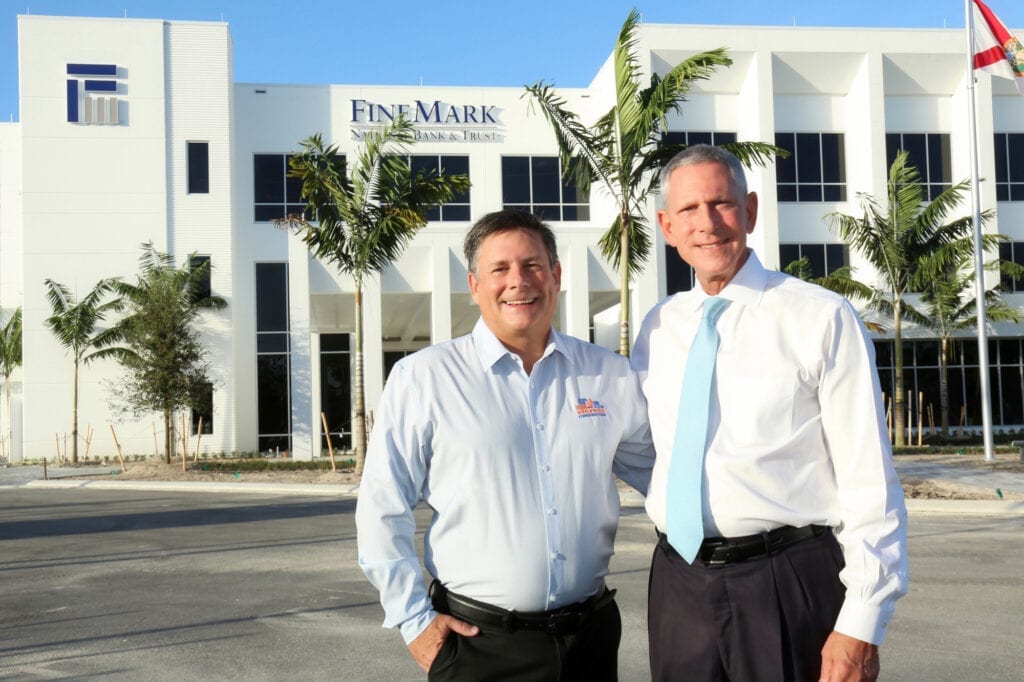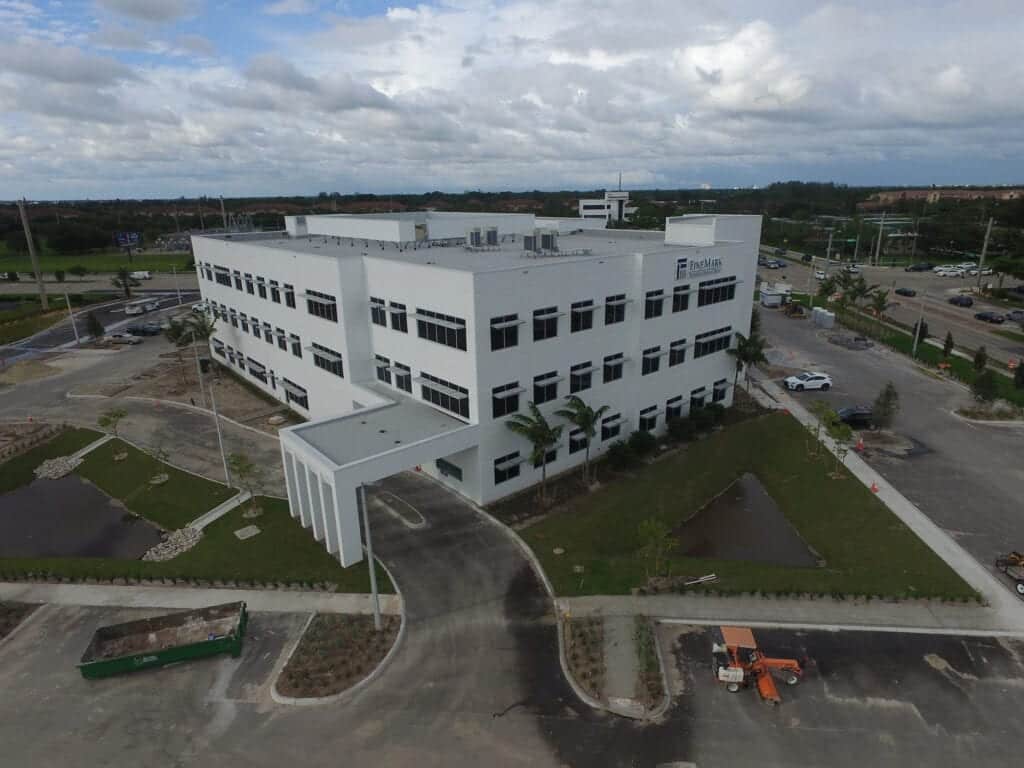FINEMARK NATIONAL BANK & TRUST’S NEW HEADQUARTERS IN FORT MYERS IS EXPECTED TO OPEN IN DECEMBER.
by: Mark Gordon | Managing Editor
Original article: https://www.businessobserverfl.com/article/banks-new-hq-includes-high-end-kitchen
Project: FineMark National Bank & Trust headquarters, a three-story, 60,000-square-foot building.
Location: Winkler Road and College Parkway in Fort Myers. Site formerly housed The Atrium Executive Center, a 127,000-square-foot former shopping mall more recently used as office space. It’s been mostly vacant for several years.
Date: Demolition of existing building on site began June 2, 2019. Construction began Oct. 17, 2019. Building is expected to open Dec. 14.
Cost: $30 million, including land, demolition of The Atrium, construction of new building, security systems, bank equipment and furnishings. FineMark acquired the site for nearly $6 million.
Builder: Stevens Construction, Fort Myers
Architect: Studio+, Fort Myers
Project details: On a 6-acre site, the building is a tilt-wall structure with high-end interior finishes that include custom millwork, tray ceilings, white oak trim and glass mosaic accent tile. The 30-foot lobby, with white oak wood and tile ascending to the ceiling, is designed for a wow entrance. “The lobby is spectacular,” FineMark President and CEO Joe Catti says.
In addition to the ceiling, acoustical panels are located throughout the main lobby to reduce sound. The community room features a 200-inch projection screen, tray ceilings, surround sound, dimmable lighting and power window shades for hosting a variety of events. The building also includes a full commercial kitchen, a natural gas generator, state-of-the-art technology throughout and 253 parking spots — more than required. The porte-cochère features pavers on the roof, aiding the view from the third-floor executive offices. The bank plans to occupy floors one and three, and the second floor is available for lease.

Stefania Pifferi. Mark Stevens, left, and Joe Catti agree that one of the coolest features in the new building is the commercial-grade kitchen.
Cool factor: Stevens Construction President Mark Stevens says the tilt-wall construction method, more common in industrial buildings, is one of several cool factors in the building. Tilt-wall is a two-step process, starting with concrete slabs cast on the ground. A crane then lifts the slabs, or panels, and sets them up vertically. Going tilt-wall, Stevens says, saved at least a month of construction time. “It’s sturdy and quick, and it’s also inexpensive,” he says. “It’s pretty cool how we adapted the technology for warehouses to an upscale building like FineMark National Bank & Trust’s headquarters.”
Another cool factor is the commercial-grade kitchen, an essential part of FineMark’s brand used for lunches with clients, receptions, presentations and more. FineMark previously built a kitchen in the headquarters its been in since 2008, which is currently staffed by two full-time chefs. Those chefs will remain with the bank when it moves into the new building in December. An on-premises kitchen, Catti says, gives FineMark the “ability to host our clients in a private, high-quality environment.”
“The kitchen in this place is unbelievable,” Stevens adds. “It rivals any commercial kitchen at any restaurant Lee County. It has an elegant hospitality feel to it.”
Challenges: Finding a location for the building was the first challenge. FineMark, with $2.51 billion in assets through June 30, was founded in 2007, when its home was a former Blockbuster Video store in a Fort Myers strip mall. The current location, Stevens says, was the third or fourth site the bank looked at and the second one it had under contract.

Courtesy. The site for the FineMark National Bank & Trust headquarters is six acres.
In construction, challenges mostly were connected in some way to the pandemic. Stevens, for example, says there were “a few hiccups in the supply chain. We lost some time there.” The crews, he says, made up for lost time by increasing efficiencies in other parts of the project.
The threat of COVID-19 loomed over construction day-to-day as well. Even after the construction industry was deemed essential, Stevens considered pulling back on work. “We just couldn’t come to grips with sending 100 people home who have families to feed,” he says, so work continued — albeit with multiple new safety and cleanliness protocols.
One big pandemic-induced change was that instead of working horizontally, one floor at a time, crews worked vertically, spacing out over all three floors. “From a critical path standpoint, we didn’t do this as efficiently and quickly as we could have before COVID-19,” Stevens says. “But it kept people safe, and we didn’t have any cases.”






